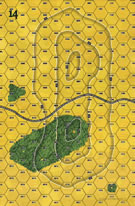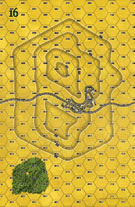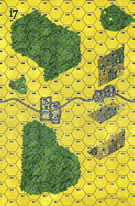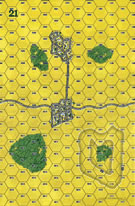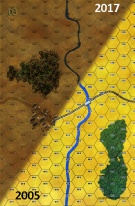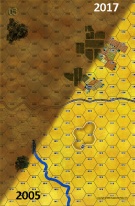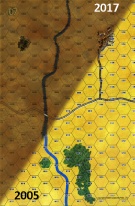|
Shocked Troops Iron Curtain #18 |
||
|---|---|---|
| (Attacker) United States | vs | Soviet Union (Defender) |
| Formations Involved | ||
|---|---|---|
| Soviet Union |  |
219th Guards Tank Regiment |
| Soviet Union |  |
35th Guards "Krasnogradskaya" Rifle Division |
| United States |  |
3rd "Spearhead" Armored Division |

|
| Overall Rating, 1 vote |
|---|
|
3
|
| Scenario Rank: --- of 957 |
| Parent Game | Iron Curtain |
|---|---|
| Historicity | Alt-History |
| Date | 1950-08-01 |
| Start Time | 08:00 |
| Turn Count | 48 |
| Visibility | Day |
| Counters | 239 |
| Net Morale | 1 |
| Net Initiative | 1 |
| Maps | 8: 14, 16, 17, 21, 3, 5, 7, 8 |
| Layout Dimensions | 112 x 86 cm 44 x 34 in |
| Play Bounty | 228 |
| AAR Bounty | 166 |
| Total Plays | 1 |
| Total AARs | 1 |
| Duplicates | HaSi038 |
| Battle Types |
|---|
| Bridge Control |
| River Crossing |
| Road Control |
| Urban Assault |
| Conditions |
|---|
| Entrenchments |
| Off-board Artillery |
| Smoke |
| Scenario Requirements & Playability | |
|---|---|
| Battle of the Bulge | Counters |
| Eastern Front | Maps + Counters |
| Iron Curtain | Base Game |
| Road to Berlin | Maps + Counters |
| Introduction |
|---|
|
Most analysis, and fantasies, of a Soviet-American war posited a massive Soviet attack spearheaded by large tank forces. Yet the calls for an American war of conquest in Europe were rarely matched by bloodthirsty rhetoric from the other side of the Iron Curtain or from within the American military. Had such a war occurred anyway, in American operational thinking and armored division's job was to break through enemy positions and exploit the opening. |
| Conclusion |
|---|
|
Official American military planning for years after the end of World War II revolved around the atomic bomb. The Korean War showed that conventional warfare was not a thing of the past, and once again the U.S. Army began to field very powerful armored divisions. Until the death of J.V. Stalin in 1953, the Red Army remained a gigantic and unwieldy force, as the Great Helmsman equated sheer numbers with fighting power. |
| AFV Rules Pertaining to this Scenario's Order of Battle |
|---|
|
| 2 Errata Items | |
|---|---|

|
The reduced direct fire value in Kursk: Burning Tigers is 4-4. (plloyd1010
on 2015 Jul 31)
|

|
Kommissars never get morale or combat modifiers. Ignore misprints. (Shad
on 2010 Dec 15)
|
| Mass Soviet Defense | ||||||||||||
|---|---|---|---|---|---|---|---|---|---|---|---|---|
Setup: The Soviets split up their forces into two halves, with two full lines across Boards 3 and 7, one right on the river, and another three hexes the west, with the purpose to defend both the east-west roads and the two bridges across the river. The dozens of anti-tank guns and AFV's bristle along the entire line. Play: The Americans quickly move down both of the roads to begin their assault, but quickly run into problems, with the Soviet artillery taking out a few steps on their approach. The Americans hold back their tanks until the infantry can tie up the Soviet guns in assaults. The Americans thus rush their men forward, and suffer through the Soviet opportunity fire relatively unscathed. The Soviets gain initiative on the turn by two on the turn and try to stop the head American leaders, but fail, and the Americans launch their assault. The first wave goes well for the Americans, who catch another break when the Soviet fire first fails to halt the Americans. After several turns of assaults, the Americans break through in the south, and bring up their tanks on both roads, to aid in the assaults. The Americans stall in the north, and the Soviets decide to counter-attack, almost completely destroying the American attack. In the south, the same thing happens, and the Soviets use their three to one infantry advantage against the Americans and swamp them with their counter attack. The Americans have no choice to retreat from the battle. The Soviet JS-4's as reinforcements never arrive because no American units reach the east side of the river. Result: Soviet Major Victory. The Victory Point Count stands at 174-79, with the Soviets having a ninety five point lead. |
||||||||||||
| 0 Comments |

 IrCu017
IrCu017 



